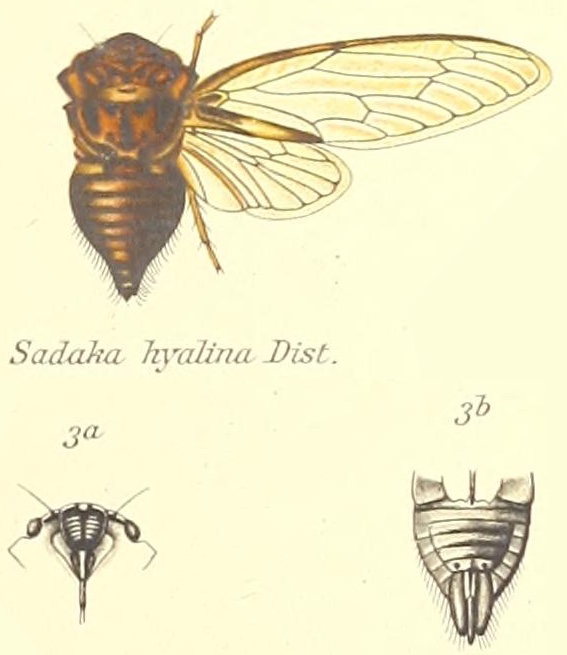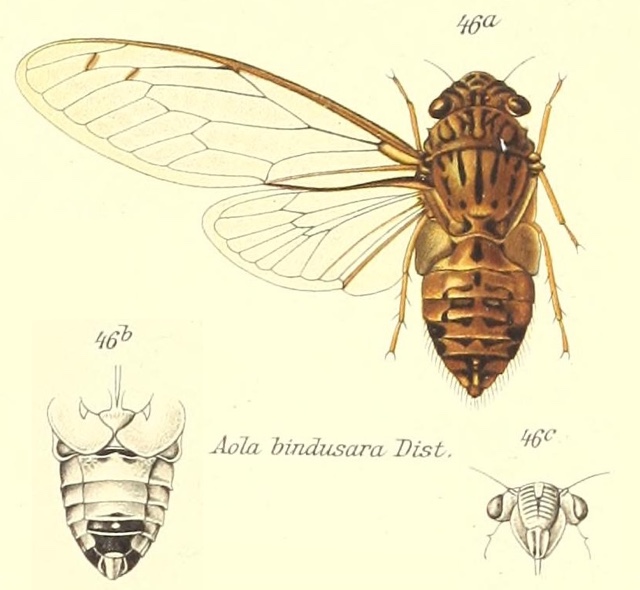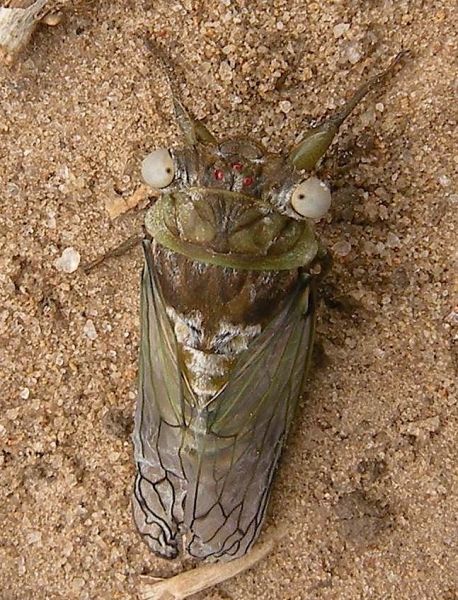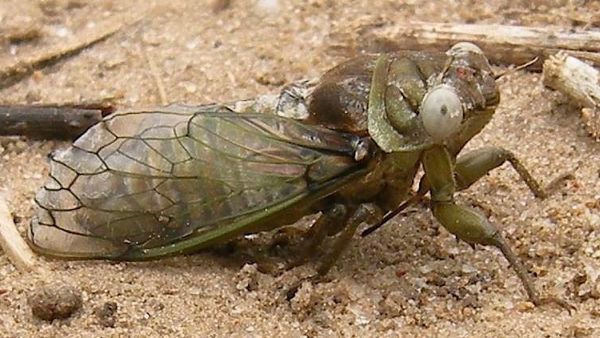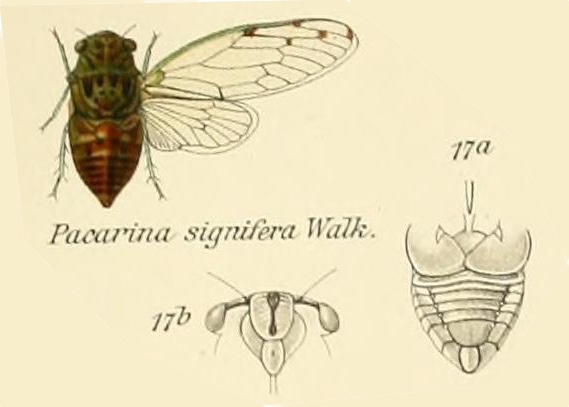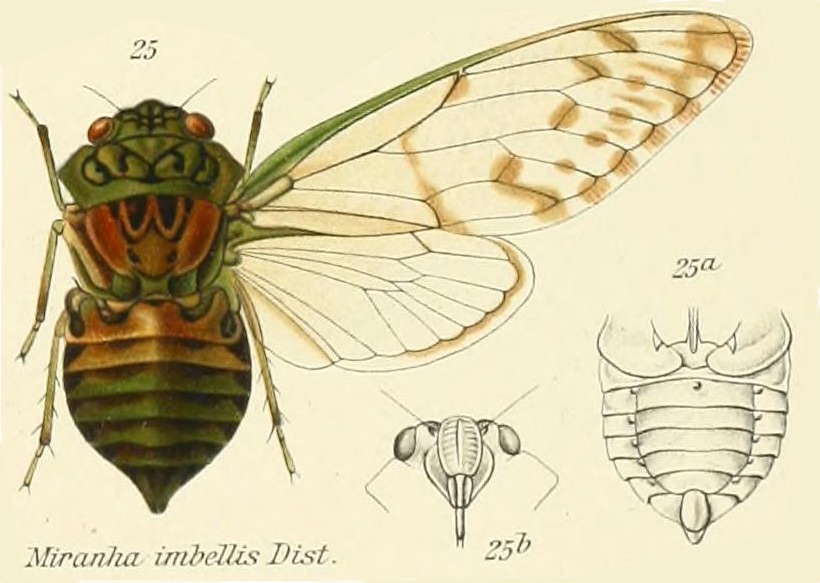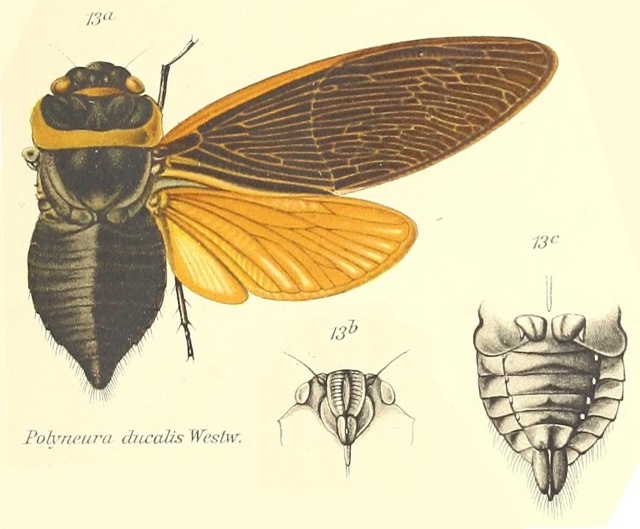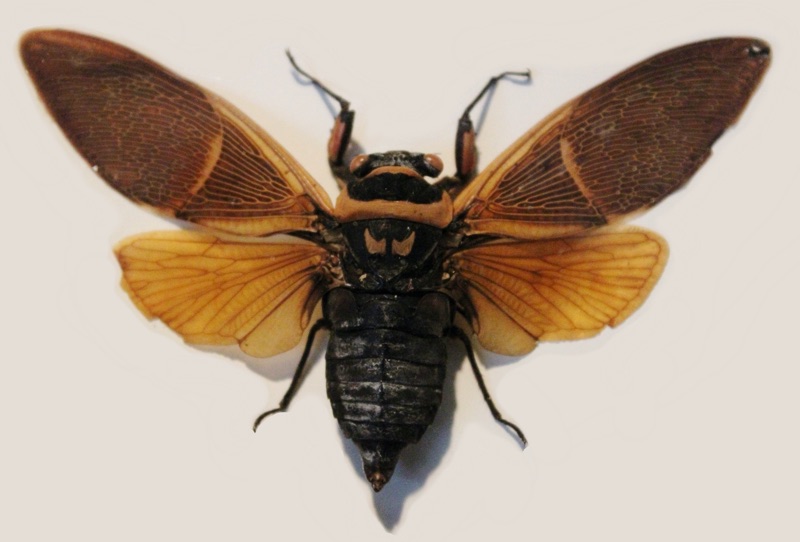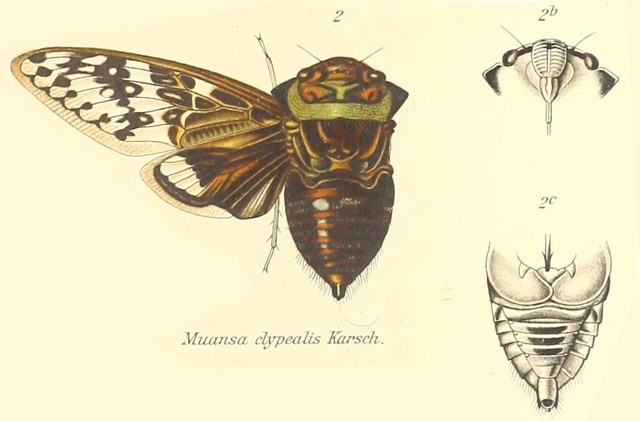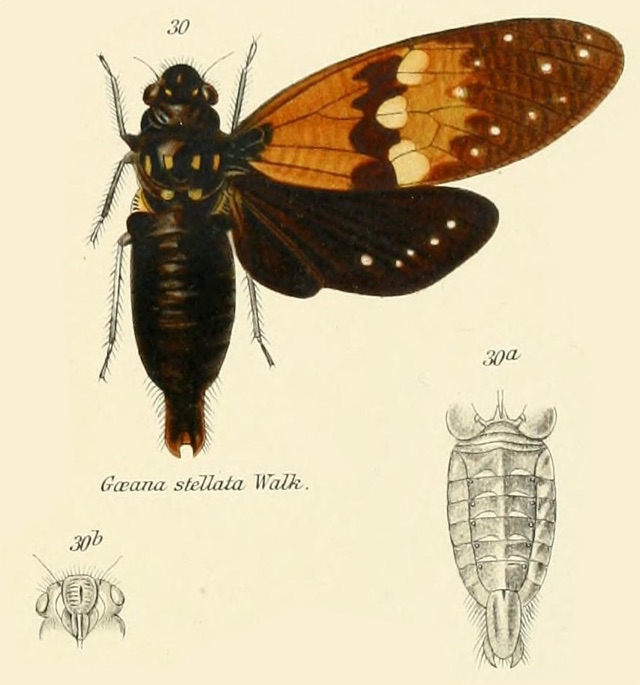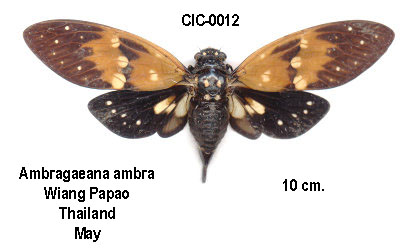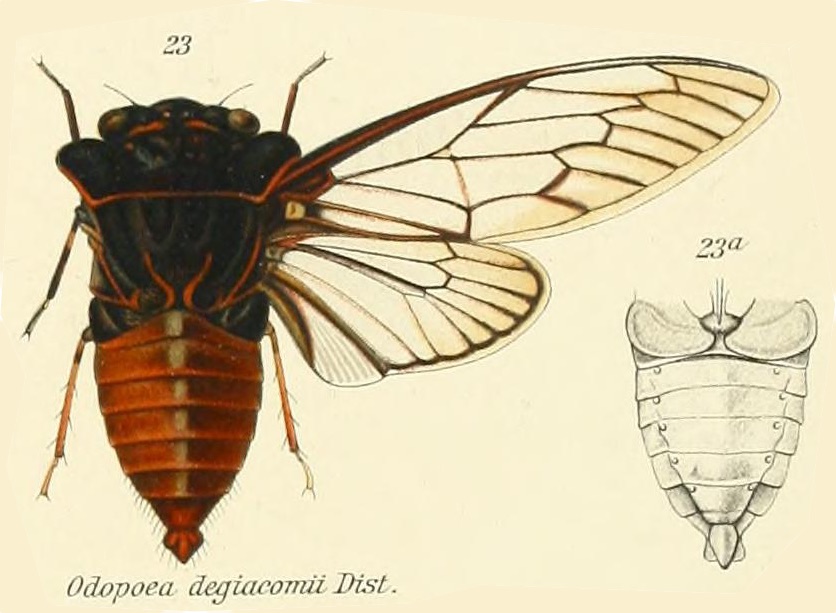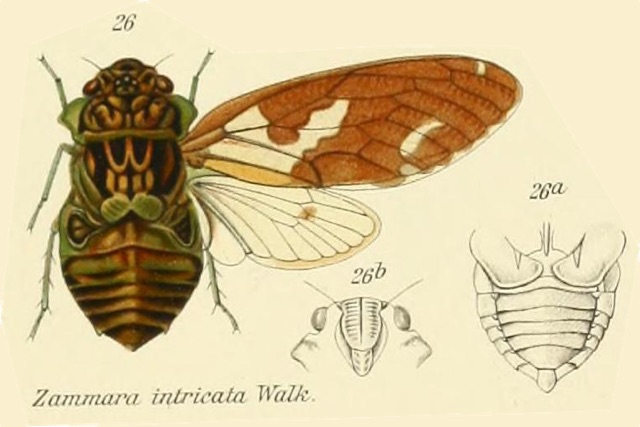I’m starting a new series on this blog called “has its name changed?” I’m looking through old documents and papers and using modern documents like Allen Sanborn’s Catalogue of the Cicadoidea (Hemiptera: Auchenorrhyncha) to check. Cicada names change from time to time, based on new discoveries by the modern cicada research/science community, and sometimes to fix grammar (like gender agreement between genus and species).
This cicada is Hemisciera maculipennis (de Laporte, 1832), also known as the “stop and go” or “stop light” cicada because of the red and green color of its wings. If you want to see one in real life, they exist in Central and South America, specifically Panama, Ecuador, Brazil, and adjacent nations. If you’re in New York and you want to see one, they have a few in the collection at the Staten Island Museum — last time I was there, there was a faded one in a display by the door (UV rays fade cicada specimen colors).
Scientific classification:
Family: Cicadidae
Subfamily: Cicadinae
Tribe: Fidicinini
Sub Tribe: Guyana
Genus: Hemisciera
Species: Hemisciera maculipennis (de Laporte, 1832)
And, since 1914 at least, its name has not changed.
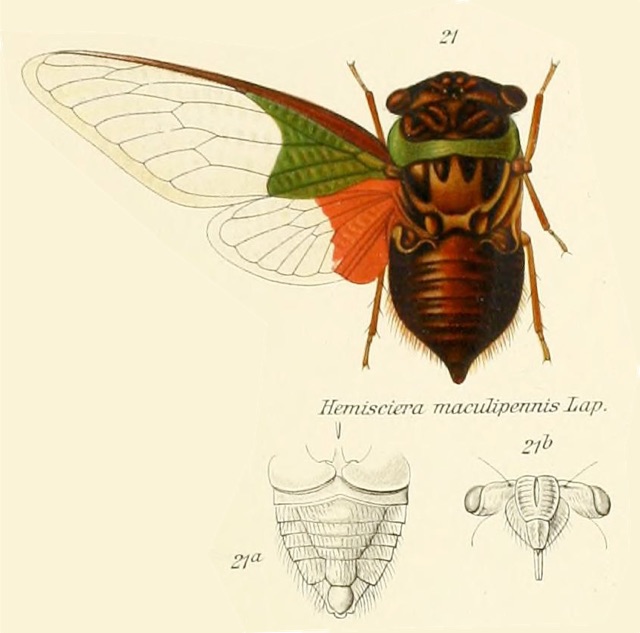
A specimen from the Staten Island Museum:
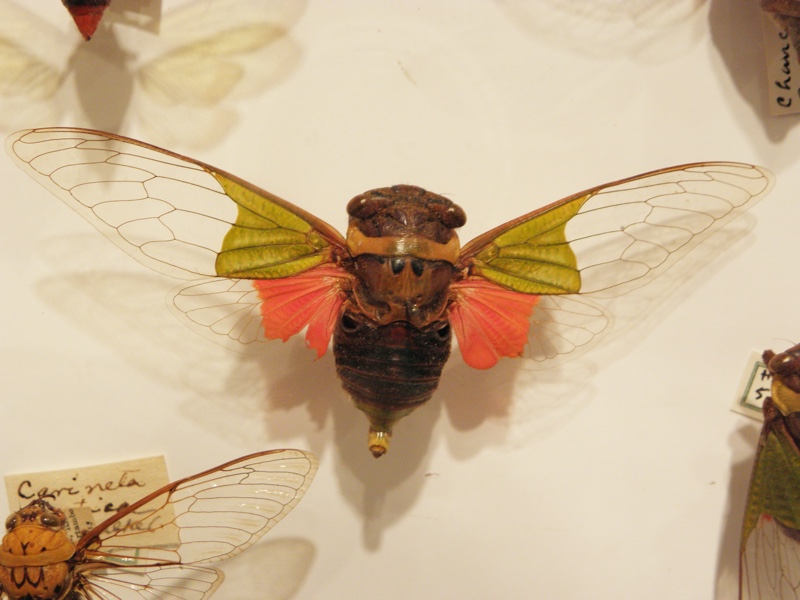
Hemisciera Amyot & Serville genus description by W. L. Distant:
Characters. — Head (including eyes) considerably broader than base of mesonotum, eves porrect, more or less stylate, length of head about equal to half its breadth between eyes, and distinctly shorter than pronotum which is about equal in length to mesonotum; abdomen a little shorter than space between apex of head and base of cruciform elevation, tympanal coverings in male with their inner margins strongly concave; metasternal plate well developed, centrally longitudinally impressed and anteriorly produced on each side; rostrum reaching the posterior coxae; anterior femora strongly spined beneath; opercula in male small, transverse, not extending beyond base of abdomen, tegmina about two and a half times as long as broad, with eight apical areas and the basal cell about as long as broad.
References:
- The illustration comes from the journal Genera Insectorum, and a specific article from 1914 by W. L. Distant titled Homoptera. Fam. Cicadidae, Subfam, Gaeaninae. Read it on the Biodiversity Heritage Library website.
- Species name information/verification comes from Allen Sanborn’s Catalogue of the Cicadoidea (Hemiptera: Auchenorrhyncha).
- Tribe information comes from: MARSHALL, DAVID C. et al.A molecular phylogeny of the cicadas (Hemiptera: Cicadidae) with a review of tribe and subfamily classification.Zootaxa, [S.l.], v. 4424, n. 1, p. 1—64, may 2018. ISSN 1175-5334. Available at: https://www.biotaxa.org/Zootaxa/article/view/zootaxa.4424.1.1
